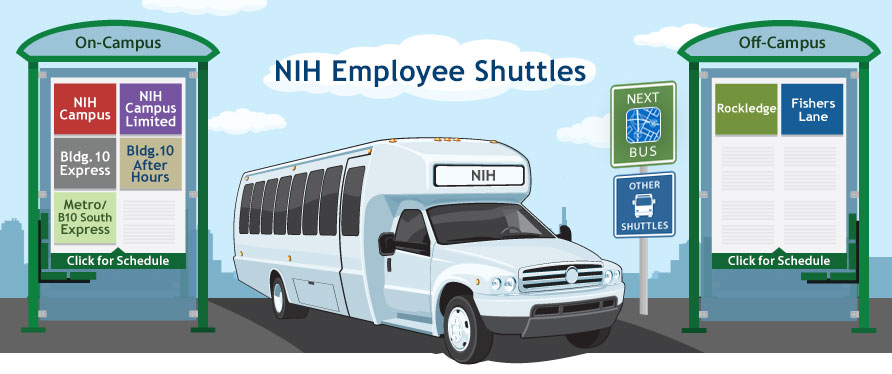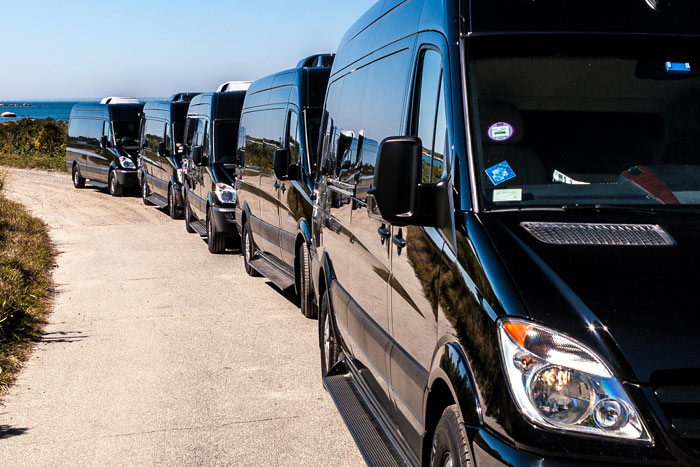20 Recommended Facts For Picking Employee Shuttle Websites
20 Recommended Facts For Picking Employee Shuttle Websites
Blog Article
Shuttle Transportation For Employees Tips For Budgeting And Costing
Here are 10 suggestions for estimating the expense of employee shuttles.
1. Perform a Cost Analysis
Start by conducting a thorough review of all the costs that are related to the operation of the shuttle. This will include direct costs such as leasing, purchases of vehicles or rentals, as well as operational expenses such as fuel, insurance, maintenance, and driver salaries. Understanding the total costs will give you a clearer idea of the budget that is required to run an effective shuttle.
2. Establish Clear Budget Goals
Set specific financial goals on the basis of cost analysis. Create specific goals for budgets using the cost analysis. These KPIs can include satisfaction of employees, usage rates, and overall efficiency. A clear set of goals will guide your spending and resource allocation.
3. Explore Funding Alternatives
Consider all possible sources of funds for your shuttle service. These sources of funding could include company funding, grants, or agreements with local authorities. Understanding the funding options can assist in easing financial burdens or enable greater service offerings.
4. Prioritize cost-effective vehicle choices
When selecting vehicles to be used for shuttle service, choose the most cost-effective option that balances initial purchase costs with operational expenses. Be aware of factors like the efficiency of fuel, maintenance requirements, and vehicle reliability. Choosing used cars in good condition or leasing them instead of buying can reduce upfront costs.
5. Implement a Dynamic pricing Model
Consider using a dynamic pricing system for shuttle service if it's possible. It is feasible to charge a nominal fee for the use of a shuttle. This could be used to offset the cost of operating. Pricing based on the amount of time used can encourage employees to take advantage of the service, and also contribute to the budget.
6. Cost Management through Technology
Utilize technology to increase efficiency and decrease costs. Fleet management programs can be used to monitor maintenance schedules, optimize routes, and monitor fuel usage. GPS tracking can improve the scheduling process and decrease the amount of idle time. This reduces fuel costs. The initial cost of investing in new technology is high, but the long-term savings can be substantial.
7. Control and Monitor Operating Costs
Regularly review operating costs to determine areas for reduction. Be aware of the consumption of fuel and maintenance costs and overtime for drivers. Adopting strict fuel management strategies including encouraging eco-friendly driving habits, may yield savings. Schedule quarterly or monthly reviews to make sure the shuttle service is within budget.
8. Engage your employees in cost saving initiatives to save money.
Encourage employees to participate with cost-savings initiatives related to shuttle transportation. You could encourage employees to use carpools, or reward those who regularly make use of the shuttle. Employee engagement can not only increase a sense ownership but also result in higher usage rates.
9. Plan for Contingencies
Budgeting for unplanned expenses requires a contingency account. There are unexpected costs that shuttle services might encounter, such as repairs due to emergency circumstances or fluctuations in fuel prices. By putting aside a certain percentage of your overall budget as a buffer, you'll be able to make sure that your shuttle service continues to operate efficiently.
10. Budgets need to be regularly reviewed and adjusted
Last, adjust and evaluate the budget in accordance with the actual performance. Request feedback from employees about the shuttle service. Regular assessments will help identify trends in transportation needs and permit timely adjustments to budgets to maximize the allocation of resources.
With these suggestions Companies can reduce costs efficiently and create an reasonable budget for employee transportation. This will improve the efficiency of services and ultimately the satisfaction of employees. Take a look at the most popular enquiry for site info including dallas airport shuttle to hotels, miami transportation services, nyc transporter, airport shuttle from airport, airport service shuttle, san francisco airport transport, airporter bus, access transport, shuttle service near me, luxury transportation and more.
10 Top Tips On The Route Planning And Efficiency Of An Event For A Company Transportation Service
Here are 10 top strategies for route planning and efficiency for transportation service for corporate events:
1. Review the Attendee Locations
Begin by gathering information about where the attendees are from. This can be accomplished through registration or by sending RSVPs that include the general location or addresses. It's crucial to comprehend the location of the attendees to help you create efficient routes and cut down on the amount of travel time.
2. Utilize Route Optimization Software
Investing in route optimization software will help you determine the most efficient routes through analyzing the patterns of traffic, road conditions as well as other variables. These software tools let you find the fastest routes and avoid congestion-prone areas. They can also recommend alternative routes if needed. Technology can be used to increase efficiency.
3. Plan for peak traffic times
If you are planning transportation, think about the peak hours of traffic. Examine traffic statistics from the past to figure out the time of day when there is the greatest congestion in the vicinity of the venue. Change shuttle schedules in order to avoid delays and make sure that guests arrive on time.
4. Establish Multiple Pickup Points
Create multiple pickup points in accordance with the attendees' locations to improve the convenience of your guests and decrease travel time. This could include hotels or public transport hubs and other popular places for gathering. With a variety of pickup points it is possible to streamline the process of transport and cut the distance traveled to the location of the event.
5. Create a detailed travel schedule
Create a comprehensive travel plan which includes estimated travel times along with departure and arriving times. Make the schedule available prior to the event to all participants to ensure that they are aware of when their shuttles will arrive. A well-organized timetable can keep your transportation service running efficiently, and will reduce confusion.
6. Incorporate Buffer Times
Incorporate buffer time into your transportation schedule to allow for unexpected delays, like weather or traffic congestion. It is possible to reduce the likelihood that attendees will miss key elements of the event due to transport issues by giving them longer intervals between pick-ups as well as drop-offs.
7. Check real-time updates on traffic
When the day approaches for the event, make use of real-time monitoring tools to dynamically alter routes. When a certain route is crowded and the possibility of rerouting buses can be used to ensure that efficiency is maintained and attendees can get to their destinations without major delays.
8. Choose a Transportation Coordinator
Choose a shuttle coordinator to the event, who will be in charge of the shuttle service. The coordinator will handle logistics, communicate with the drivers and resolve any issues quickly. It is essential to have a person who is in charge of the transport operation. This will to ensure that everything goes smoothly.
9. Communicate with Attendees
Make sure that attendees are informed of their options for transportation, such as shuttle schedules, pick-up points and any other changes that might be made. Mobile applications, SMS messages as well as printed material are great methods of communicating with attendees.
10. Feedback from the After-Event
After the event, ask attendees for feedback on their transportation experience. Inquire about the quality of the routes, timeliness and satisfaction. The feedback you receive will help you determine the strengths and weak points of the transportation plan.
By implementing these tips companies can efficiently create routes and improve the efficiency of transportation for corporate events. The proper planning of routes does not just ensure that attendees arrive on time, but also helps to create a positive atmosphere that is positive for the venue. Planning for transportation is essential to the success of corporate events. Have a look at the most popular get more info for corporate event transportation for blog info including companies that transport, globe transport, vehicle transport service, globe transport, global transport, managed logistics, managed logistics, companies in logistics, safe transportation, managed logistics and more.